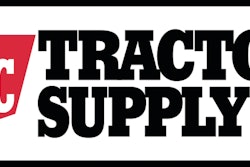Understanding the environmental impacts across your organization’s supply chain is imperative. There’s no question that companies must assess, evaluate and optimize their supply chain operations in order to reduce their carbon footprint. In fact, government and industry are strongly urging the issue. And there’s no denying that today’s customers like green business. Additionally, optimized supply chains with smaller carbon footprints are more efficient, less costly and less likely to experience sudden changes in energy and fuel prices.
Because of these factors, careful analysis of all trade-offs—which are often the norm, not the exception when it comes to supply chain operations optimization—throughout a supply chain is critical in order to ensure overall success.
Sustainable actions
Identifying, tracking and managing supply chain emissions is essential to optimization efforts, with the primary goal of detecting inefficiencies in fuel, electricity and water consumption and then correcting those inefficiencies to help eliminate waste and reduce costs. In addition, companies need to be aware of various reporting requirements, identify opportunities for improvement and reducing costs.
Monitoring and reducing carbon footprints also makes good business sense. Not only does it help eliminate waste and reduce costs internally, it also can help companies choose more efficient business partners and better mitigate risks caused by sudden changes in energy and fuel prices. In addition, lower carbon footprints can improve corporate brands; and companies can gain an advantage over competitors by providing comprehensive emissions information.
The metrics used to determine the environmental impacts of supply chains include water use, energy use, waste that is produced and emissions. Those metrics need to be examined more closely as well. For example, is any of the energy used renewable? Are the emissions toxic? Is waste recyclable or is it hazardous?
It isn’t likely that companies will be able to create a list of all the metrics and then check them all off. What’s important is to evaluate the metrics, determine ideal baselines and then optimize those areas that align best with goals and requirements while holding all the others as close to the baselines as possible.
During supply chain optimization efforts, it’s important for executives to be mindful that when improving one benchmark, it may adversely impact another. Companies need to look holistically at the supply chain to balance any trade-offs that will have to be made. Successful companies often find incremental solutions that gradually improve environmental performance while minimizing burden in other areas.
To fully understand the trade-offs inherent in their choices, executives must be able to analyze the entire value chain of a product or service in terms of cost and environmental impact. In doing so, they can make certain that various components in that chain interact in ways that benefit the whole system.
Ultimately, no green initiative will succeed unless it has a proven value such as better economics for the company; improved benefits to the customer; and a marketing advantage for the products and services.
Companies can often rely on internal management controls to assess and document their supply chain optimization efforts and better understand the trade-offs they make. External controls—such as the reporting requirements from government entities and industry—do not often require companies to delineate the trade-offs made as they work to reduce their environmental footprints.
The heightened public awareness of the relationship between business and the environment in recent years has a direct impact on supply chain management and creates opportunities for companies. It has raised questions that many executives are now trying to answer: How will we incorporate green, sustainable practices into supply chain operations? How can we assess the trade-offs between sustainability and cost control? And how do we value long-term sustainability in the same equations as growth and profitability? And it has created marketing opportunities to communicate objectives and accomplishments for the company as well as products and services.
Green initiatives that work
In its continuing effort to keep the marketers of “green” products honest, The Federal Trade Commission (FTC) last month released its revised “Green Guides,” a set of guidelines meant to help and remind marketers and advertisers who make claims that are “truthful and non-deceptive.” While the guides aren’t technically regulations, they describe the types of environmental claims the FTC may or may not find deceptive under Section 5 of the FTC Act. The Act allows the FTC to take “enforcement action” against deceptive claims, which can lead to Commission orders prohibiting deceptive advertising. If a company then violates these orders, it would be subject to fines.
Industry initiatives also provide companies with a platform on which to devise and build their greenhouse gas emissions reporting initiatives. For example, the Global Reporting Initiative (GRI) provides companies and organizations with a comprehensive sustainability-reporting framework aimed at promoting economic, environmental and social sustainability.
Additionally, the future of public reporting will have an even greater focus on transparency. The continued push for corporate social responsibility (CSR) reporting is one such indicator. The Dow Jones Sustainability Index defines CSR as a business approach that creates long-term shareholder value by embracing opportunities and managing risks deriving from economic, environmental and social developments. The GRI’s sustainability reporting framework looks more broadly at an organization’s economic, environmental, social and governance performance and organization’s ability to maintain that performance. Establishing a sustainability reporting process, according to the GRI, helps organizations set goals, measure performance and manage change; and is a key platform for communicating positive and negative sustainability impacts—including trade-offs.
Deploy the steps today
What’s critical is that companies determine the best supply chain measures that meet their specific requirements and strategic goals and then analyze and compare those measures to understand if—and where—any tradeoffs might occur. Through lifecycle assessments that leverage what-if scenarios and modeling and risk/opportunity matrices, companies can strike the right balance as they optimize supply chain operations and reduce their supply chain’s environmental footprint.
By utilizing the latest in lifecycle assessment services, network design, optimization and planning systems—which incorporate environmental footprint considerations—executives can both incorporate environmental practices within their supply chain, while at the same time provide people with a transparent view of their entire supply chain.
Companies today can and should be a force for good—blazing the trail on how to care for the environment. By adopting cutting-edge tools and services to help better understand a companies’ environmental challenges and opportunities, executives can indeed adapt to the inevitable trade-offs while still achieving environmental and financial success together.
Dr. Chet Chaffee is Vice President, Life Cycle Assessment at FirstCarbon Solutions, Irvine, Calif. With over 50 technical papers to his credit, Chet provided expert testimony before the U.S. House of Representatives, the U.S. Environmental Protection Agency and the Federal Trade Commission. As former executive vice president at Scientific Certification Systems, he directed over 200 lifecycle and sustainability initiatives for General Motors, Home Depot and Unilever.

















